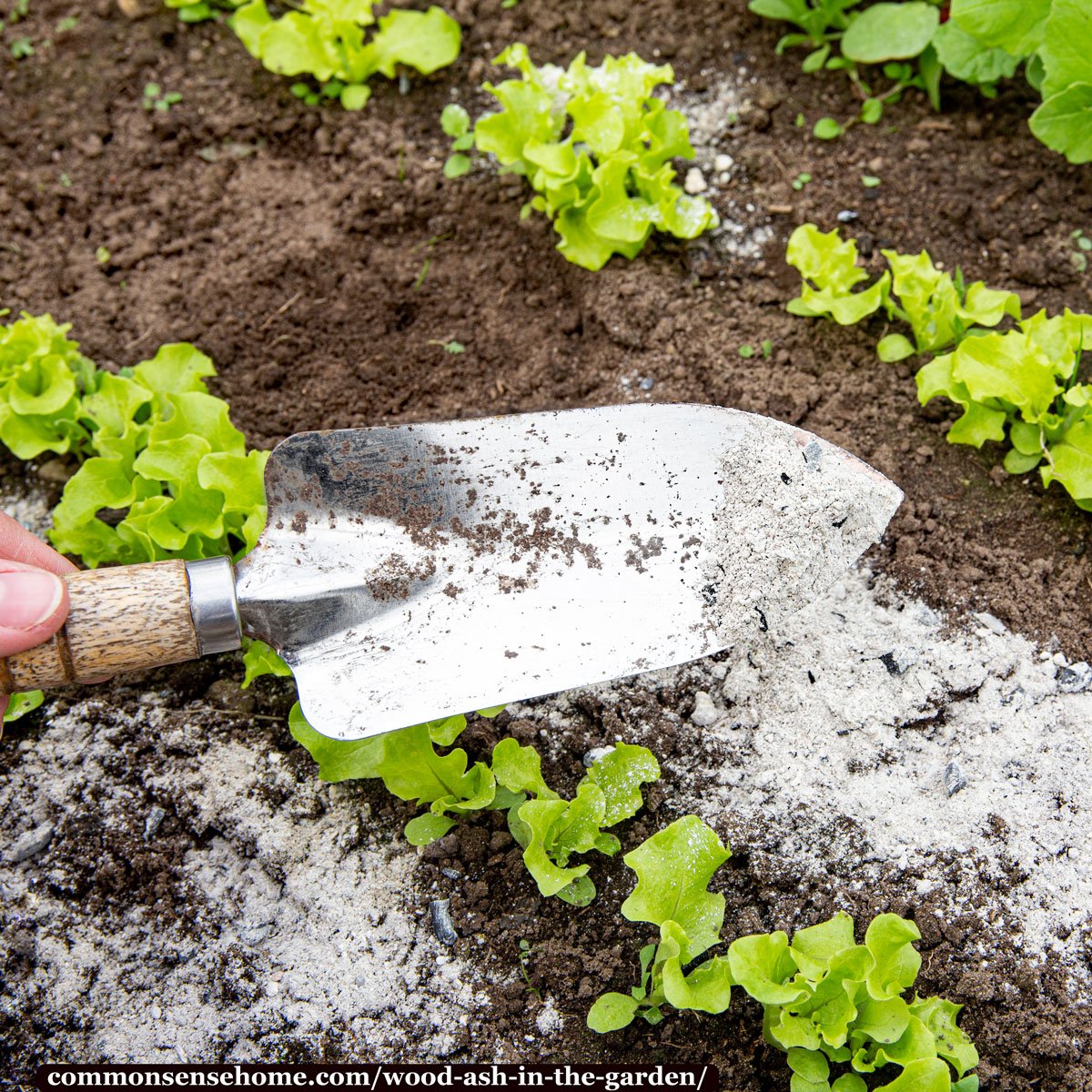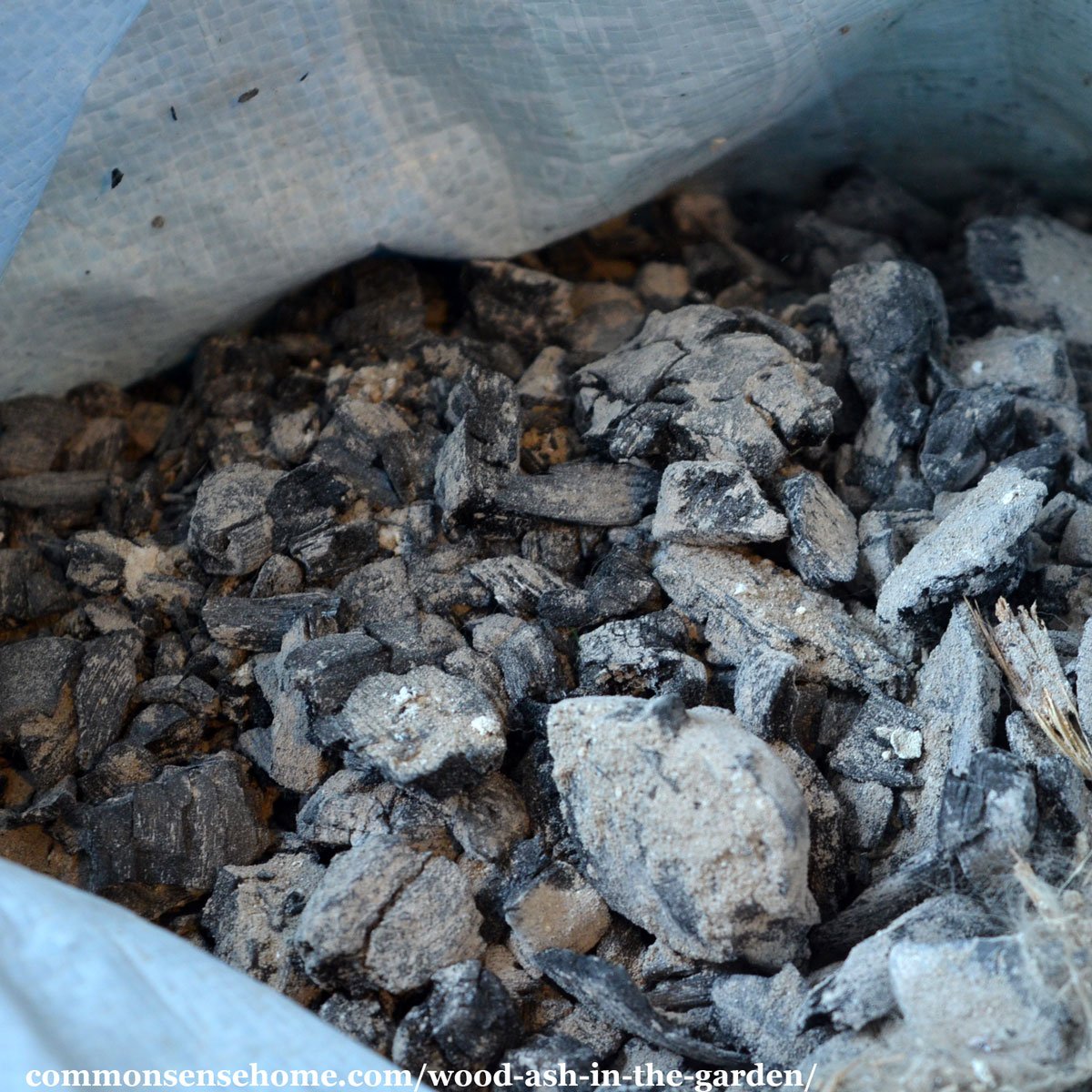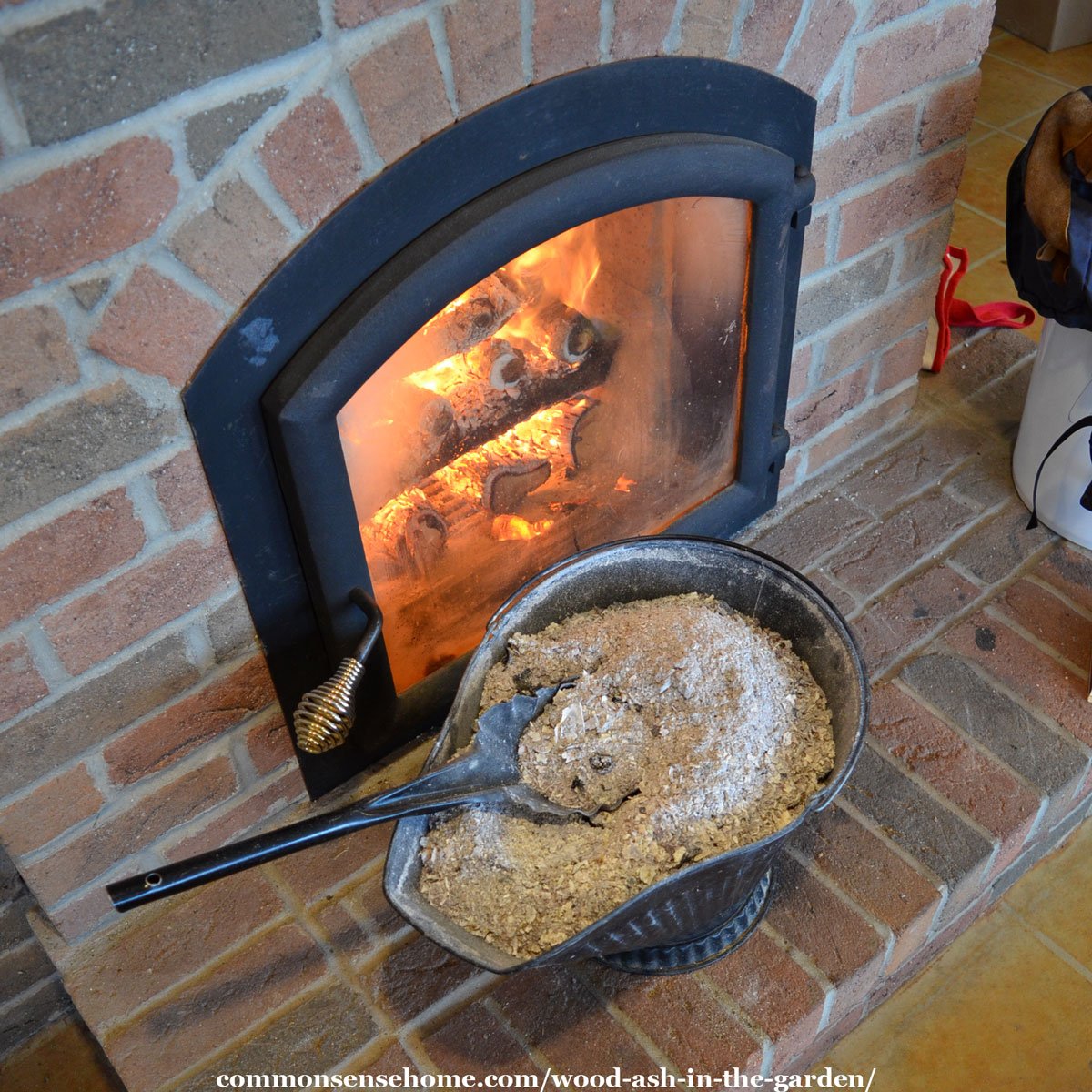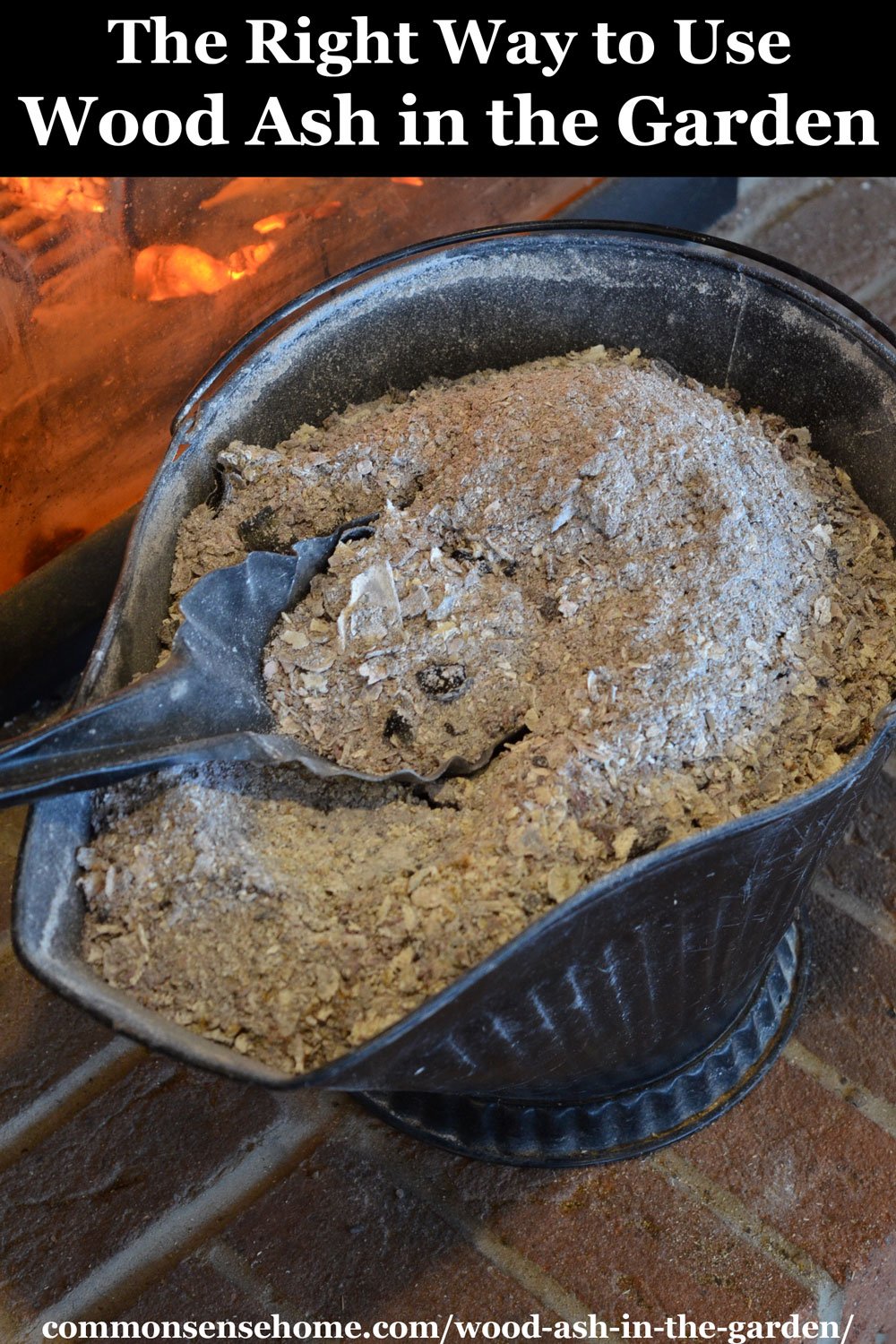The Right Way to Use Wood Ash in the Garden
This post may contain affiliate links. Read my full disclosure here.
Using wood ash in the garden can be a good source of free fertilizer, but there are a few things you should know before you start spreading. We’ll share the benefits of wood ash, the right and wrong ways to apply it, and how to use it for pest control.

Potential Benefits of Using Wood Ash in the Garden
Wood ash nutrients very depending on the wood and growing conditions of the wood. In general, wood ashes include significant amounts of Calcium, Potassium, Magnesium, Phosphorus, Sulfur, Iron and Sodium, as well as other trace minerals.
Hardwoods such as oak and maple tend to have a higher potassium content, while softwoods like pine have a lower potassium content.
The calcium in wood ash (calcium carbonate) may be 20% or more of the ash. This calcium can help tomatoes avoid blossom end rot.
Ashes also raise the soil pH, making them a good fit for plants that like “sweeter” soil, such as:
- Brassicas (cabbage family plants like cauliflower, broccoli, kale, etc.)
- Tomatoes
- Asparagus
- Lettuce
- Apples, figs, and pears
- Bulbs, including onions, garlic and leeks
- Rosemary and lavender
- Lilacs
Wood ash may help boost populations of mycorrhizal fungi, improving soil health and nutrient availability. (Read more about these helpful fungi in Mycorrhizal Planet.)
How to Apply Wood Ash
Before you apply wood ash to your vegetable garden soil, it’s best to do some soil testing. Most plants prefer a pH level between 6.0-7.0. If your soil is alkaline (with a pH of above 7), wood ash is not a best choice for your garden. Use less, or avoid using it altogether.
For fertilization, apply a thin dusting of wood ash over the garden bed, orchard floor, grass, etc. Make sure the ash is cool with no live embers before applying.
Application guidelines vary from 5-10 pounds per 1,000 square feet up 15 to 20 pounds (approximately a five gallon pail) per 1000 sq. ft. per year. More isn’t necessarily better. In fact, too much ash can throw off the soil pH and nutrient balance.
As an example, some years ago my brother applied a light layer of ash in his apple orchard. My nephew saw the ash, and, wanting to help, added a lot more ash. The trees got “burned” from the excess nutrients and their growth that year was stunted.
In our garden, we apply a dusting of ashes in late fall or early winter. This gives the ashes time to break down. We also apply soiled coop bedding at the same time for nitrogen.
Chicken manure needs time to age before it’s safe to have in contact with plants. Top dressing the garden beds in fall effectively acts as sheet composting.
Dealing with Charcoal and Other Types of Application
Some people sift out the charcoal chunks, because they can tie up nitrogen as they break down. When we use the sheet composting method, the charcoal soaks up the nitrogen from the coop bedding. In spring, we scrape back the bedding/charcoal that hasn’t broken down to plant in the soil below.
If you’re worried about charcoal tying up nutrients, separate it and use it to make biochar.

If you want to mix wood ash directly into garden soil, do so in early spring, preferably at least a month before planting. This gives the soil ecosystem time to adjust.
To make a wood ash tea (like compost tea), fill an old sock with wood ashes and let soak in a couple gallons of water for two to three days. Use to water plants, pouring on the soil below the plants.
Things to Avoid
Do not use ashes from charcoal grills, garbage, or treated wood. Avoid ashes from wood that may be contaminated with heavy metals or other pollutants. Ashes from wood burning stoves are easy to gather, but you can use any source of clean ashes.
Would you like to save this?

Don’t use too many ashes at once, or apply them in a pile. As noted above, heavy applications can cause more harm than good. If plant leaves turn yellow after ash application, you used too much.
Wood ashes will raise pH, so avoid using wood ashes on acid loving plants, such as blueberries, strawberries, rhododendrons, azaleas, birch trees, red maples, etc. Increasing pH may make potatoes more susceptible to potato scab than plants grown in acidic soils.
Don’t use ashes near seedlings or in direct contact with leaves. The ashes are caustic, and can burn tender foliage.
It’s best to keep wood ashes out of compost piles. Though many guides suggest composting to “mellow out” the ashes, they tend to reduce the worm count in your pile. They can also throw off the pH balance.
When you’re working with ashes, try not to breath them or get them on your skin. They can irritate your lungs the same way they irritate tender plant tissue. Wear protective gear like gloves and a mask, and avoid spreading on windy days.
Using Ashes for Pest Control
Wood ashes can help deter and kill some soft bodied garden pests, such as slugs, snails, and cutworms. The ashes create a barrier that the pests find uncomfortable to crawl over. The high pH of the ashes can also dry out the pests’ bodies, killing them.
If you handle ashes with your bare hands, you’ll notice that they dry out and irritate your skin. They do the same thing to soft bodied garden pests.
For garden pest control, apply a light side dressing of ashes to the soil surface near the plants. Do not apply the ashes directly to the leaves. If you want to treat worms on leaves, use another option, such as diatomaceous earth.
Wood ashes don’t work well for hard shelled pests, and of course winged pest fly right over. Use ashes in combination with other pest control methods, such as companion planting. See Natural Pest Control in the Garden for more ideas.
More Gardening Tips
We have a big annual garden, plus orchards, berries, nuts, and more. Each year we learn new things about gardening, and share them here on the site.
Some of our most popular articles include:
10 Heirloom Seed Companies You Don’t Want to Miss
Duck Pest Control – Working with Ducks in the Garden
Flea Beetle Control (with Tips for Saving Damaged Plants)
Build a Secure Greenhouse Foundation That Preserves Your Growing Space
The Practical Greenhouse Guide – What You Need to Know Before You Build a Greenhouse

Laurie Neverman is the creator of Common Sense Home and author of “Never Buy Bread Again“. She and her husband and two sons live on 25 acres in rural northeast Wisconsin, where they are working on their permaculture oasis. She firmly believes that life is better with ducks and nutrient dense food.



I posted your article on Gab. It has been a big hit! Thanks for the good info!
Good to hear. Thanks so much for sharing.
Thanks for another great and timely article!
My husband and I were just discussing ways to use the ash from our wood stove. Ours is designed to heat an 800 sf space, which leaves us with a couple of gallons of ash at the end of most Winters. He has in recent years begun scattering ash in our woods, as well as possibly too much in our garden. We have just under 10 acres, some of which is bog, a lot of red maple, balsam and birch, so we will use a little more discretion in the future.
In addition, I would love to deter slugs form my strawberries. Would it work to spread some around my beds? I did not like the effect that slug bait or copper wire had on my strawberries. Or is beer still our greatest hope?
Regarding combining soiled straw with ash, do you mean, for example, straw bedding in the chicken run? We have been using deep mulch bedding in our run, and in Fall and Spring clear it out to put in our compost pile. It is not exactly fresh, but it is not exactly finished compost, either, though the hens and I turn it in the course of each season. Do you think the bedding we clean out in the Fall be appropriate on our fruit trees?
And when you pull the straw away in Spring, how far away do you mean? We have very sandy soil. I have been working on increasing organic matter around our trees to help hold moisture and increase biota in the soil around them. In your opinion, is two to three feet away from the trunk enough distance, or do you essentially haul it away to a garden compost pile to finish up?
Some uses for ash that have recently been suggested to me:
A couple of years ago a neighbor mentioned that ash can be used to increase tire traction on ice. We keep a little tub of it in our car, and it works great!
Another use for ash that is new to me is a comment I have read a couple of times that it can be used as a dust bath for chickens. Wouldn’t it be irritating to their respiratory tracts as much as to ours?
Regarding charcoal from wood stoves, my chiropractor, who also homesteads, recommended that I lay a partially burned (and thoroughly cooled) log on the bedding in our run as an alternate to a dust bath. This makes use of the anti-parasitic qualities of the charcoal. Our hens both peck at the logs and rub up against them. Not sure how well little chunks of charcoal would work, but I imaging that crushing it to powder and adding it to a dust bath would have some benefit.
We use ducks for our slug issues. I think diatomaceous earth might be safer by strawberries than ashes, but you could test the both in different areas.
We use deep litter in our coop, too, but I spot clean duck droppings and some of the heaviest deposits of chicken droppings in between deep cleaning. We do a deep cleaning in spring before the new chicks come in. We use wood shavings in the coop, so the soiled bedding is poo and wood chips. When applied to the soil surface (or over existing mulch in the orchard) it composts with the ashes, and soil life comes up and slowly mixes it in over time. Some nutrients leach down with precipitation, too.
When I pull back mulch to plant, I only pull it back far enough to expose where I need to put seeds or plants into the soil. The mulch stays on site to keep breaking down. As plants emerge, I’ll tuck mulch within a couple inches of them. For trees, we keep the mulch about a hand’s width away from the trunk. It stays in place all the time, and we add more as it breaks down. We’ve been getting wood chips from a tree trimming company, and those go on around the trees during the growing season, after the ground has warmed.
Mulching heavily can attract more slugs. Ash or DE should help with that. We got the duck patrol to deal with the slugs when the population boomed after back to back wet years. I tried beer traps, but I think our possums kept drinking the beer.
Ash does work good for traction. I sprinkle some on spots on the driveway that tend to get icy.
I do use ash as part of my chicken dust bath. I’m sure it is somewhat irritating, but they only use it when needed, and we keep the coop well ventilated. I’ve gotten a snort or two of ashes over the years, too, when cleaning the stove or spreading them. Ideally, yes, you should mask up, but as long as exposure isn’t chronic, normal mucus production should be up to dealing with modest exposure. We put in the unsifted ashes in the dust bin mix, so they get the charcoal, too.